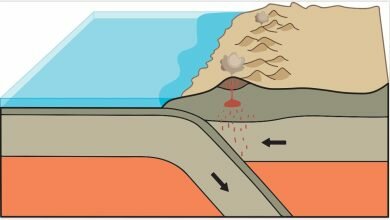Effect of wearing a face mask on patients with severe asthma. go

Novel coronavirus disease (COVID-19) affects millions of individuals worldwide, creating challenges in chronic non-communicable disease management. Previous reports suggest that 1.6–2.9% of COVID-19 patients have asthma and 2.8% of these patients have a poor outcome for COVID-19.1, optimistic herd immunity, social distancing and vaccination for use of face masks are currently The main is COVID-19 prevention. Strategy in several countries South Korea has been affected by the pandemic since February 2020, and wearing face masks in public is mandatory. Although severe asthma patients are at higher risk of severe COVID-19, no studies have assessed the effects of face masks on patients with severe asthma. Despite a lack of evidence from randomized controlled trials, many countries have mandated or recommended wearing of face masks. In addition, there is no action plan for wearing masks for patients with chronic respiratory diseases and limited lung volume, such as the elderly and pregnant women. Therefore, we assessed the impact of COVID-19 on severe asthma management and mask-wearing behavior and 2) measured exercise capacity in patients with severe asthma with and without a face mask.
Patients were recruited from five university hospitals in three different regions of Korea (Seoul, Daegu and Gwangju) between August 2020 and December 2020.Supplementary Figure 1) A total of 84 severe asthma patients were enrolled in this study (supplementary methods.2 A questionnaire was developed by two quantitative research experts, and factors were assessed on a 7-point Likert scale (0 = strongly disagree, 7 = strongly agree). The effect of wearing a Korean Filter (KF)-94 mask, which is equivalent to an American N-95 or a European Filtering Facepiece Respirator 2, on exercise capacity was assessed by a 6-minute walk test (6MWT). Patients’ vital signs (saturation pulse oxygen [SpO2], Borg scale scores for heart rate and dyspnea) were measured without a KF-94 mask. After one hour of rest, patients underwent another 6MWT wearing a KF-94 mask and showed vital signs after measuring the 6MWT again. Supplementary Figure 2 Shows a schematic illustration of the study design. Written informed consent was obtained from all participants prior to enrollment, and the study protocol was approved by the Institutional Review Board (Asan Medical Center IRB number: 2020–1471). This study was carried out in accordance with the Declaration of Helsinki.
We surveyed a 7-point Likert scale questionnaire for 84 participants (mean age: 57.7 ± 11.4 years). Supplementary Table 1 Reflects sociological and clinical data of patients. The Likert scale score for asthma exacerbation with mask use was 3.98 ± 1.04, indicating a neutral response (Table 1). Specifically, 71.4% (60/84) of patients responded that asthma was better controlled in this pandemic year of 2020 than in the previous year, and 23.8% (20/84) during the pandemic year. Experiencing asthma exacerbations. Additionally, 22.6% of patients were later rescheduled for outpatient clinic appointments during the COVID-19 pandemic. Nearly twice as many patients experienced delays in outpatient clinics in areas with a high incidence of COVID-19 (such as Daegu, a special epidemic containment zone) compared to less affected areas. The most common reasons were “concerned about cross-infection of COVID-19 in the hospital” (84.2%, 16/19), “attempt to socially distance” (10.5%, 2/19), and “asthma was well controlled”. (5.3%, 1/19). The distance to the 6MWT without the mask was 353 ± 58 m, which was not significantly different from that when doing the 6MWT after wearing the mask (342 ± 57 m, P = 0.659, Figure 1). Patients exhibited marginal yet significantly lower SpO2 with the mask compared to those without the mask (95.3% vs 96.8%). P = 0.043), but heart rate and Borg scale ratings were not significantly different between the two conditions.
|
Table 1 Survey on mask use behavior and patient perception during the COVID-19 pandemic |
|
figure 1 ,a) Distance covered by severe asthmatic patients in a six-minute walking test (6MWT) with or without a KF-94 mask. ,b,D) comparison of changes in oxygen saturation (SpO2; (b), heart rate (C), and the Borg scale score (D) before and after 6MWT between the two conditions. ,P<0.05, ns: not statistically significant. GraphPad Prism 7 (GraphPad Software, CA, USA) was used for statistical analysis. |
A previous study reported that N-95 masks cause hypoxic or hypercapnic respiratory failure in patients with chronic obstructive pulmonary disease with an expiratory volume of 1s <30%. In our study, the most commonly used masks by patients with severe asthma were KF-94, surgical, and cloth masks, in the order outlined (Supplementary Table 2The World Health Organization recommends N-95 masks only for healthcare workers during the COVID-19 pandemic. A recent study has shown that surgical masks can adequately protect against COVID-19 RNA aerosol transmission. 5 Although statistically wearing a KF-94 mask reduced saturation after 6MWT, it was still within the normal physiological range. Severe asthmatic patients should be informed that surgical masks are available if shortness of breath and headache are experienced with the N-95 mask.
Interestingly, more than two-thirds of patients reported that their asthma was well controlled during this pandemic year of 2020, compared to the previous year. During the COVID-19 pandemic year, the exacerbation rate was lower than in a similar out-of-multicenter cohort in previous years (23.8% versus 41.0%). Our results are consistent with recent literature showing that the COVID-19 pandemic did not affect asthma exacerbation in patients with normal asthma.7 In addition, a recent study reported that COVID-19 pneumonia may reduce the severity of severe asthma. does not inspire. Although several hypotheses have been raised, this may be attributed to reduced exposure to external allergens and secondary to improved viral infections. Personal hygiene using face masks.
Our study had some limitations. This descriptive study focused only on patients with severe asthma without comparison to a control group. In addition, the effects of the KF-94 mask on lung physiology were evaluated using the 6MWT, which limits generalizability to real-world activities.
Since the outbreak of the COVID-19 pandemic, patients with severe asthma have been concerned about COVID-19 infection, but their asthma symptoms were relatively well controlled in the real world. Patients with severe asthma demonstrated that exercise capacity and subjective breathlessness did not increase significantly over the course of 6 mW, although oxygen saturation was slightly lower than with the N-95 mask without the mask. Further studies on individualized strategies for the use of face masks and adherence to their efficacy in patients with severe asthma are necessary.
Grant
This research was supported by a grant from the Korea National Health Research Project (Project No. 2022-ER1205-00) and the Korea Health Technology R&D Project through the Korea Health Industry Development Institute (KHIDI) funded by the Ministry of Health. and Kalyan, Republic of Korea (grant number: HC19C0318). Funders had no role in the design of the study, analysis and interpretation of the data or writing of the current manuscript.
Disclosure
All authors declare that there is no conflict of interest with respect to the publication of this article.
Reference
1. Choi YJ, Park JY, Lee HS, et al. The effect of asthma and asthma medication on the prognosis of patients with COVID-19. ur respir j, 2021;57(3):2002226. DOI: 10.1183/13993003.02226-2020
2. Lee H, Kim SH, Kim BK, et al. Symptoms of expert-diagnosed asthma–COPD overlap in severe asthma: overview from the Korean Severe Asthma Registry (KOSAR). Allergies, 2021;76(1):223–232. doi:0.1111/all.14483
3.Kyung SY, Kim Y, Hwang H, et al. Risks of N95 face mask use in subjects with COPD. respiratory care, 2020; 65(5):658-664. doi:10.4187/respcare.06713
4. Feng S, Shen C, Xia N, et al. Cowling BJ. Rational use of face masks in the COVID-19 pandemic. lancet respire med, 2020;8(5):434–436. doi:10.1016/S2213-2600(20)30134-X
5. Leung NHL, Chu DKW, Shiu EYC, et al. Respiratory virus exacerbation in exhaled breath and the efficacy of face masks. net meadow, 2020; 26(5):676–680. doi:10.1038/s41-2
6. Kim MH, Kim SH, Park SY, et al. Analysis of symptoms of adult severe refractory asthma in Korea from the Severe Asthma Registry. Allergy Asthma Immunol Res, 2019;11(1):43-54. DOI:10.4168/air.2019.11.1.43
7. Aguiluz-Gracia I, Berge M, Bocabella C, et al. Real-life impact of the COVID-19 pandemic lockdown on the management of pediatric and adult asthma: a survey by the EAACI Asthma Section? Allergies, 2021;76(9):2776–2784. DOI: 10.1111/all.14831
8. Grandbastian M, Piotin A, Godet J, et al. SARS-CoV-2 pneumonia was not acutely aggravated in hospitalized asthmatic patients. J Allergy Clin Immunol Pract, 2020;8(8):2600-2607. doi:10.1016/j.jaip.2020.06.032




